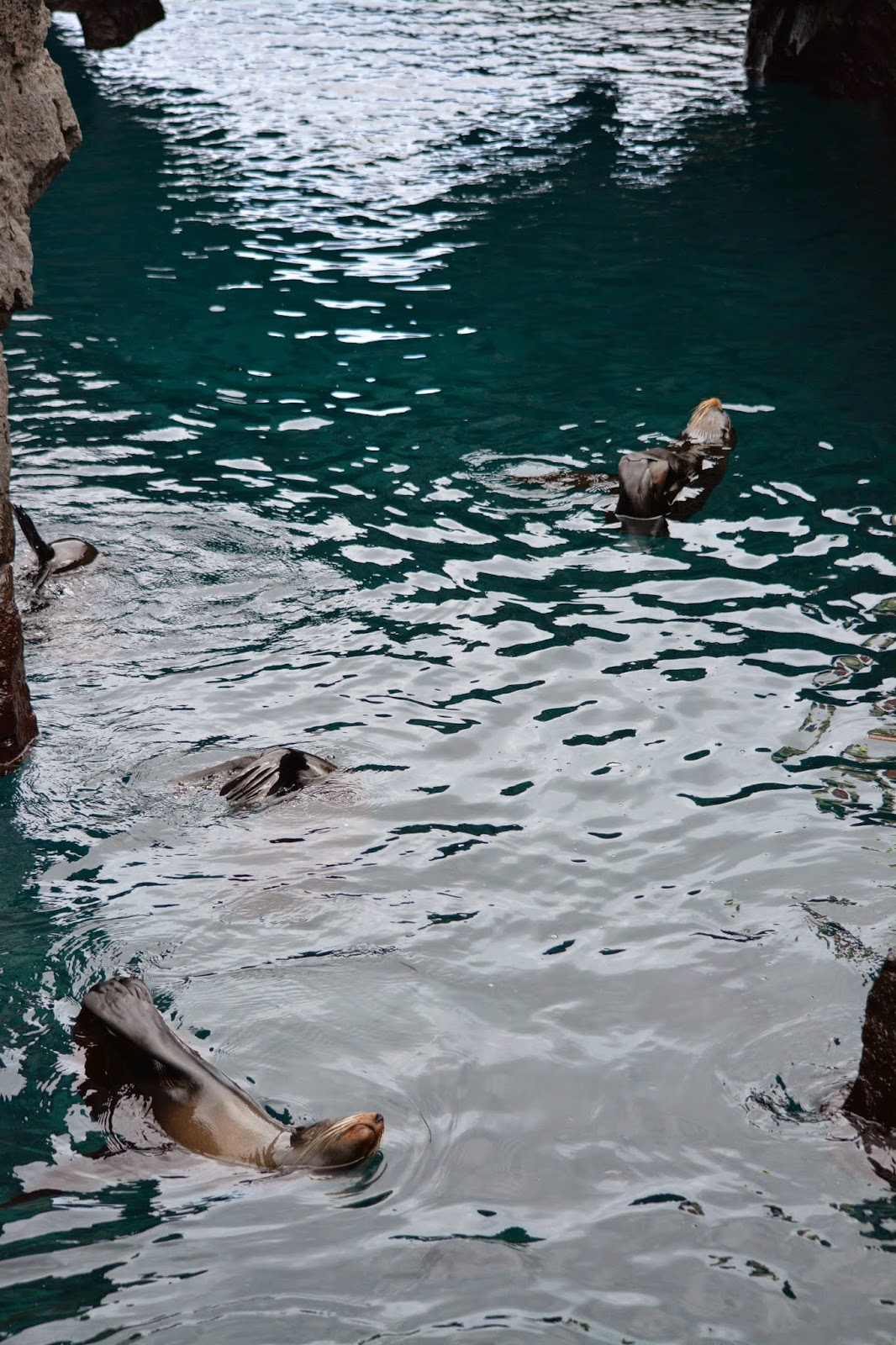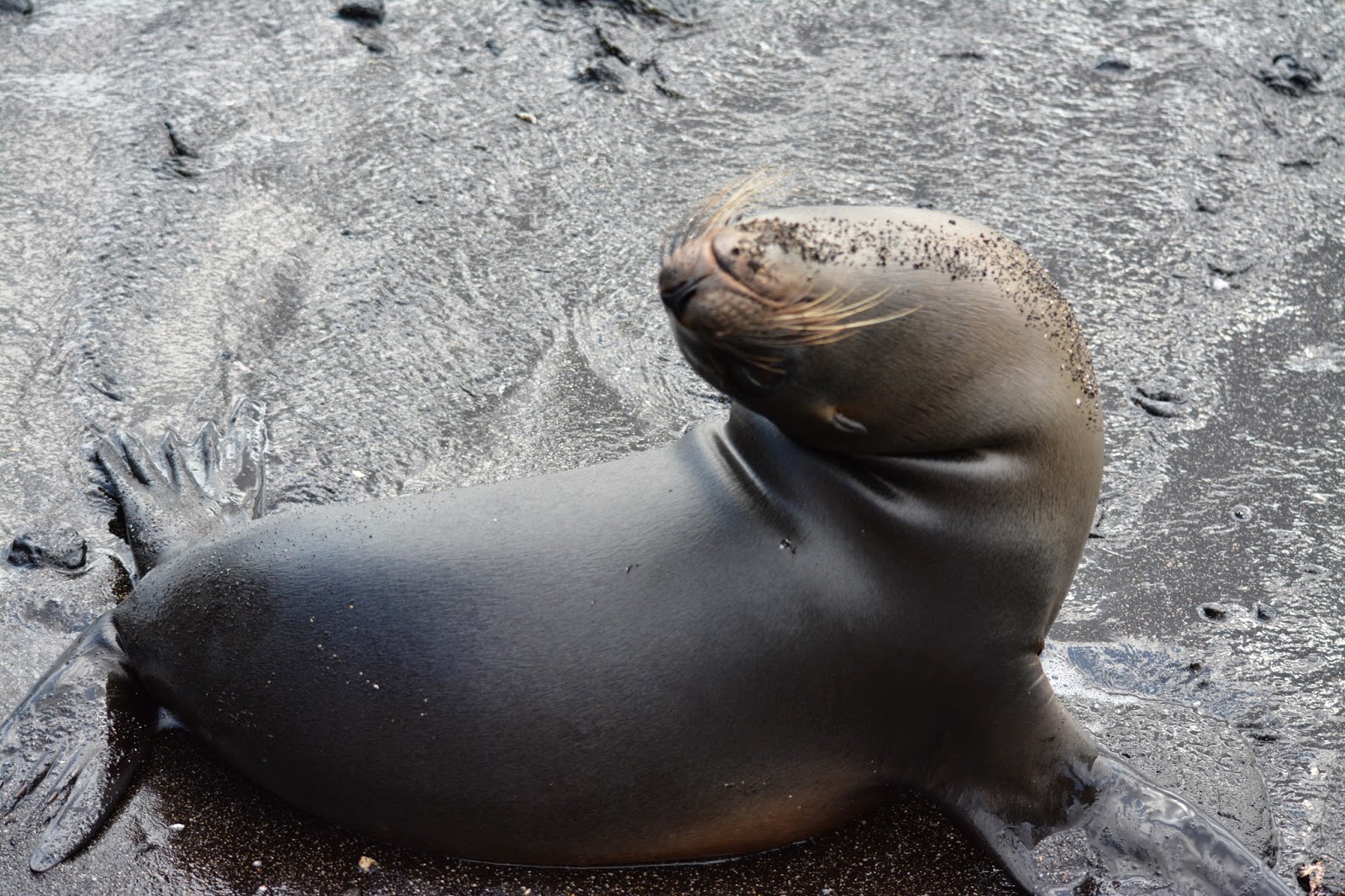 |
| Isn't this a beautiful shot? |
Narrative Copied from the internet, all pictures c/o Frances:
"Often confused with seals, sea lions have their own distinct
intelligent identity that makes them the favored ones to be trained by the U.S.
Navy's Marine Mammal Program based in San Diego to detain and help scuba
divers. They are mammals that live in the oceans and roam the land close to it.
In their natural habitat, they live up to 10-15 years. However, in captivity,
aided by a healthy environment, they can live up to 25-35 years. They are not
very aggressive towards humans, and although there have been instances of
attacks, they are few and far between. Most species are readily trainable and
widely-used for entertainment as well as rescue operations.
Sea lions can be easily distinguished from other members of their order as they
have external ear flaps and long front flippers that let them walk easily on
land. Depending on their type, they weigh about a ton and are 2.4 to 2.8 meters
in size. They have slightly-elongated faces with little whiskers on both sides
close to their nostrils. Their 'cute' appearance has made them a popular
attraction in aquariums and zoos worldwide. However, they are vicious
carnivores, and strangely, evolutionarily related to wolves and bears. They
hunt fish, squid, octopi, and smaller pennipids (seals and smaller sea lions)
using their conical-shaped canine teeth. Although a part of oceanic life, they
can only stay underwater for 10-15 minutes at a stretch.
They cannot survive far from the ocean. As a result, they can be found on
coastlines of virtually every ocean except the North Atlantic. This includes
the tropics as well as subpolar waters near both poles. For instance, the
largest type, the Steller, is found on either side of the Bering strait. As
apex predators, sea lions follow their prey and choose the most fertile oceanic
regions to colonize. These include the Pacific coast of both American
continents and Polynesia. Due to the large size of their colonies, they need
suitably large and plain (sandy or rocky) shores to colonize."
Read more at Buzzle: http://www.buzzle.com/articles/sea-lions-habitat.html
From the Galapagos via the eyes and clicks of Frances...

















No comments:
Post a Comment